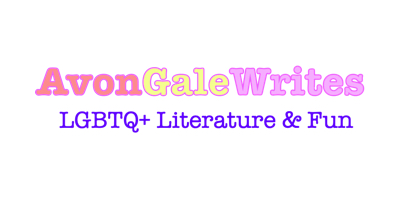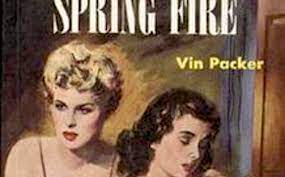Marijane Meaker, author of the novel Spring Fire, still remembers the loads of letters she got from queer women. This book came out in 1952, but became an instant hit following its publication. It is also believed that the novel gave birth to the lesbian pulp fiction genre. The book was not aimed at any lesbian market.
However, it was evident from the success of Spring Fire that there was indeed a market for such books. The novel was about a college girl who falls for another female. As with most of the early queer novels, their affair ends in tragedy. When their love affair is discovered, one of them is sent to a mental institution. The other girl ends up rejecting her homosexual feelings.
Although Meaker didn’t like the ending, her publisher was of the opinion that it was necessary. The book would’ve been declared obscene if they portrayed homosexuality in a positive light.
Homosexuality and queer YA literature over the years
The treatment of the LGBTQ community in the United States was quite bleak when Spring Fire was on the shelves. The American Psychiatric Association considered homosexuality as a mental disorder during those days. People belonging to the LGBTQ community were not given positions in the government. The reason was that people saw such individuals as a security threat.
Everyone looked upon the LGBTQ with discomfort, disgust, or fear. Even more dismal were their views towards transgender people. In a poll published in 1967, most of the Americans disapproved of homosexual relationships. The scenario is totally different in recent times. There’s a wider acceptance of same-sex marriages.
The amount of young adult (YA) books that feature queer characters has been growing considerably. In the 1970s, roughly one of such books was on the shelves every year. This increased to seven per year towards the end of the 20th century. Now, more than 50 queer YA novels release annually.
The early queer YA novels
The YA books mostly reflect the changes that are taking place in the world. They also take into consideration the treatment of queer people in the modern world. A significant increase in queer YA literature has, in a way, mirrored the rise of LGBTQ activism.
The Second World War created some of the early LGBT communities. Both men and women soldiers who were always looking for others like them, found their partners in the military. Many consider I’ll Get There. It Better Be Worth the Trip as the first queer YA novel. This book by John Donovan came out just weeks before the Stonewall Riots.
The book tells the tale of a 13-year-old named Davy. He moves in with his alcoholic mother and gets into a relationship with his classmate. He even has a sexual encounter with this classmate after a kiss. Davy’s dog gets killed in a hit-and-run incident. The event shatters him to a great extent. He wonders whether the relationship with his classmate was the reason.
The book tried to find a correlation between the character’s same-sex attraction and the death of a loved one. This became one of the early themes of queer YA novels. Among the first books to reverse this trend was Nancy Garden’s Annie on My Mind.
Annie on My Mind
Published in the year 1982, Annie on My Mind talks about two girls in New York City. They first become close friends and later their friendship develops into a romantic relationship. A refreshing change in this novel compared to the earlier ones was that both the characters survived. Not only did they survive but their love survived as well.
This idea in queer YA literature at the time was no less than revolutionary. As expected, there were some major retaliations. First, there were frequent bans on the book. Then there was this high-profile case involving parents in Kansas. They objected to the placement of this book in high schools of the local area.
Copies of this book were burned on steps of the district headquarters of the school. The district had all the copies of the novel removed fearing a controversy. The supporters of the novel were not willing to let go. They filed a court case in support of the book, which they ultimately won.
Characters of color in YA LGBTQ literature
Until the 1990s, queer YA literature was mostly centered on the white population. Only a few among them had characters of color. With the publication of a few novels such as The Necessary Hunger, things began to change considerably. This book by Nina Revoyr is about two female rivals in basketball. One of them is a Japanese-American and the other is black. They eventually fall for each other.
Another book featuring such characters, The House You Pass on the Way, came out during the 1990s. It is about a biracial small-town girl struggling with her sexuality. Although more books are coming up with characters of color, the queer YA literature is still disproportionately white.
YA trans novels
At the beginning of the 21st century, there was an explosion of queer YA literature. Despite this, trans YA novels were almost non-existent. This changed with the release of Luna in 2004. Written by Julie Anne Peters, the narration of the story happens through the eyes of Regan.
In the story, Regan’s sibling is gradually beginning to accept that she is a trans girl. Since the publication of this novel, this has become a theme in trans stories. Mostly a cisgender character is at the center of such novels.
The push for inclusiveness
More recently, the trans authors have begun telling their own stories. Pat Schmatz’s Lizard Radio and Meredith Russo’s If I Was Your Girl are the examples. One can also witness an increasing presence of characters who are asexual. The publishers have taken note of the fact that there exists an audience for queer YA literature.
The push for having a more inclusive queer literature is also gaining momentum. This has happened especially after the recent successes of such books. Among them is When the Moon Was Ours by Anna-Marie McLemore. This novel is about the love between a trans boy and a cis girl.
In the story, the trans boy paints moons and the cis girl grows roses on her wrist. Interestingly, both of them are characters of color. Another great example would be C.B. Lee’s Not Your Sidekick. It talks about a queer Asian-American girl who scores an internship with a character who is a supervillain.

